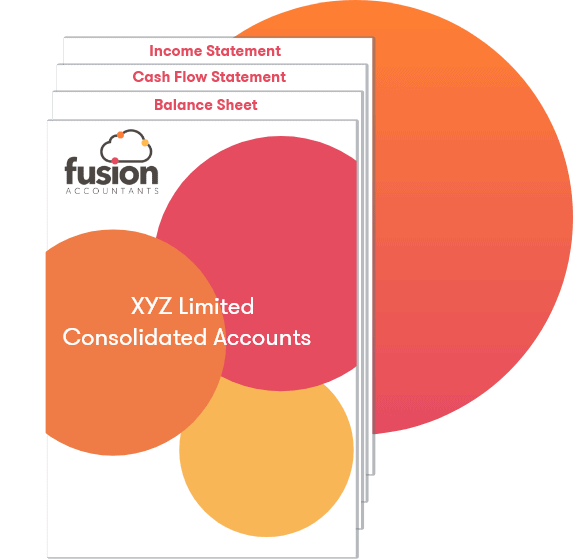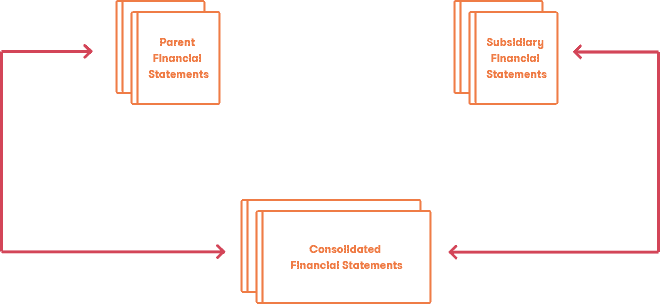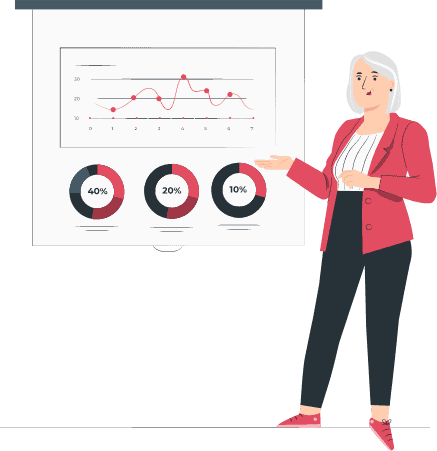Consolidated accounts
Putting trust into your
financial figures



Compiling and presenting of the consolidated accounts
Assist with the tax returns
One set of financial accounts
Dedicated client support

Consolidating your financial statements
Successful businesses commonly encounter opportunities to grow through acquisitions by buying up competitors or other businesses. When your business acquires a controlling stake in another, accounting rules require you to consolidate your financial statements. Regardless of whether you absorb the new company or leave it operating as a separate business, this is the case.
What is a consolidated financial statement?
Consolidated financial statements are financial statements for business entities with multiple subsidiaries or divisions.
Generally speaking, this involves the production of a consolidated balance sheet, income statement, and cash flow statement. Consolidated financial statements are essential, particularly for investors, customers, and regulators. This is because the subsidiaries and parent companies form a single legal entity.
As a result, consolidated financial statements are necessary to determine the overall financial position of the business.


When would financial statements be necessary?
Consolidation means the parent company reports the subsidiary’s financial results as if it didn’t exist. In some cases, even minorities can have a controlling interest in a company. Consolidation is required in small-business relationships where your company owns more than 50% of the other company. Even if consolidation is required, the two companies’ financial statements can be produced separately. Those willing to deal with third parties — lenders, potential investors, government agencies, etc. — should be consolidated.
Does my business need to
create consolidated financial statements?
According to UK law – specifically, the Companies Act 2006 (CA06) – medium-sized groups must prepare consolidated, or group, accounts. Small companies are exempt. To qualify as a small company, two of the following three conditions must be met:
- The business’s net turnover should not exceed £25.9m net, or £31.1m gross
- The business’s average number of employees should not exceed 50
- The business’s balance sheet total should not exceed £3.26m, or £3.9m gross


To present an accurate picture of your company’s finances, you may not need to consolidate all subsidiaries. If you don’t want to consolidate subsidiaries because:
- The interest of the parent company is held exclusively with the intention of a subsequent resale
- Obtaining the information required for the creation of a consolidated financial statement would require disproportionate expenses or cause undue delays
- Long-term restrictions are in place that stops the parent company from exercising rights over assets or management of the subsidiary
Remember that consolidated financial statements rules apply to foreign subsidiaries as well. So, in short, if your company is based in the UK, your subsidiaries must be consolidated.
Why Choose us?
Consolidating financial reports takes time, and there’s always the risk of incorrect data due to omissions, errors, etc. However, we can easily combine financial data. Our expert team will provide you with one set of financial statements that includes parent and subsidiary revenues and expenses. There’s also a consolidated balance sheet, profit and loss, stock summary, cash flow, and more.
How to prepare consolidated financial statements
After receiving financial statements from your company’s subsidiaries, you must prepare a consolidated financial statement for the entire company. Therefore, it would be best if you kept in mind the following essential guidelines when preparing consolidated financial statements:
- Firstly, you will need to maintain uniform accounting policies across the group.
- It is also important to remember that financial statements for all companies within the group should be prepared for the same accounting period-end.
- When determining the effective date of acquisition for a subsidiary, you should ensure that this is the date at which control passes (in many cases, this is significantly later than the date found on the official legal agreement).


Balance sheet
When financial statements are combined, all subsidiary assets become assets of the parent company. As with the subsidiary, the parent’s liabilities appear as liabilities. In most cases, the parent pays more for a subsidiary than its net assets are worth (assets minus liabilities). In this case, the “extra” is recorded as “goodwill.”
Example: Let us say you paid £100,000 for a company with assets valued at £220,000 and £130,000 worth of liabilities. The company’s net assets equal £90,000 — so you will put £10,000 worth of goodwill on the consolidated balance sheet.
What is “Goodwill”?
This is any excess of the amount paid for an acquisition over the value of the net assets acquired. It reflects the value of the whole acquired business being greater than the sum of its parts.
Example: If net assets with a value of £100m were acquired for a purchase price of £120m, then goodwill would be: £120m – £100m = £20m. Goodwill is shown separately in the group statement of financial position.
Equity
Consolidating the equity section of the balance sheet and the owners’ or shareholders’ equity statement eliminates any equity in subsidiaries. Equity in a subsidiary is eliminated by consolidation. If the parent company owns a smaller percentage of the subsidiary, that equity must be reported. For example, assume you pay £100,000 for 80% of a £90,000 company. Your entire balance sheet (including the £10,000 in goodwill) would be added. It would be listed as a “minority interest” or “non-controlling interest” in the equity section and the equity statement.
Other Statements
Revenues, expenses, losses, gains, and cash flows are all consolidated. The subsidiary and parent’s financial transactions are absent from the consolidated income and cash flow statements. For example, assume your company purchases a separate delivery service. When you need deliveries, you can use the same company. Those payments would not appear on your consolidated statements as expenses, revenue, or cash flow negative. No parent-subsidiary relationships are reported, only transactions with external suppliers or relationships.

Statement of financial position: Summary
| £ | Holdco | Sub | Adjustments | Group |
|---|---|---|---|---|
| Assets | ||||
| Investment in Sub | 1 | – | (1) | – |
| Other assets | 4 | 200 | 204 | |
| 5 | 200 | 204 | ||
| Equity | 2 | 80 | (1) | 81 |
| Liabilities | 3 | 120 | 123 | |
| 5 | 200 | 204 |
What does a financial statement look like?
ABC Ltd is a parent company, and XYZ Ltd is its subsidiary. ABC bought XYZ some years ago for £1m, which was also the value of XYZ net assets at that time. There was no difference between the amount paid and the value of the net assets acquired. This means the goodwill in the ABC Ltd group’s accounts is £Nil.
Take a look at this example:
ABC and XYZ’s assets and liabilities are set out above, together with the consolidated group figures. The consolidated group statement shows that the ABC group controls a much more significant amount of assets (£204m) than the individual accounts of ABC might suggest (only £4m). The group is also more heavily indebted than ABC’s accounts disclose. Its total liabilities are £123m, not just the £3m disclosed in ABC’s accounts.
Benefits of consolidated financial statements
If your business consists of branches, subsidiaries, or sister companies, it can become difficult to monitor the health of your business group. In addition, you might have questions like how your business is doing overall or how your different branches perform. Creating consolidated financial statements will help you find answers to all these questions and more.
Suppose you have a long-run interest in the parent company (parent’s shareholders or creditors). In that case, consolidated financial statements are vital to you simply because these financial statements present a clear picture of the total resources of the combined entity.


Limitations of consolidated financial statements
A single piece of information could be lost when different time data sets are combined, so be careful when you do this. This is especially true when combining data from companies with vastly different operating characteristics.
Because subsidiaries are legally distinct from their parent companies, their creditors and stockholders have no claim on their assets, and their profits are not shared.
Thereby, the consolidated financial statements are usually of little use to those interested in obtaining information about individual subsidiaries’ assets, capital, or income.
FAQ ‘s
Why are Consolidated accounts necessary?
Compiling consolidated financial statements gives an accurate and fair picture of an organisation’s financial health and is generally required when one firm holds more than 50% of another’s common voting stock.
What is included in Consolidated financial statements?
Consolidated financial statements are the “financial statements of a group in which the assets, liabilities, equity, income, expenses and cash flows of the parent company and its subsidiaries are presented as those of a single economic entity”
What is the difference between a Balance sheet and Consolidated balance sheet?
A Balance sheet is a document of the financial situation of a company, while a Consolidated balance sheet is a statement showing the financial status of more than one company in the same group taken together.


